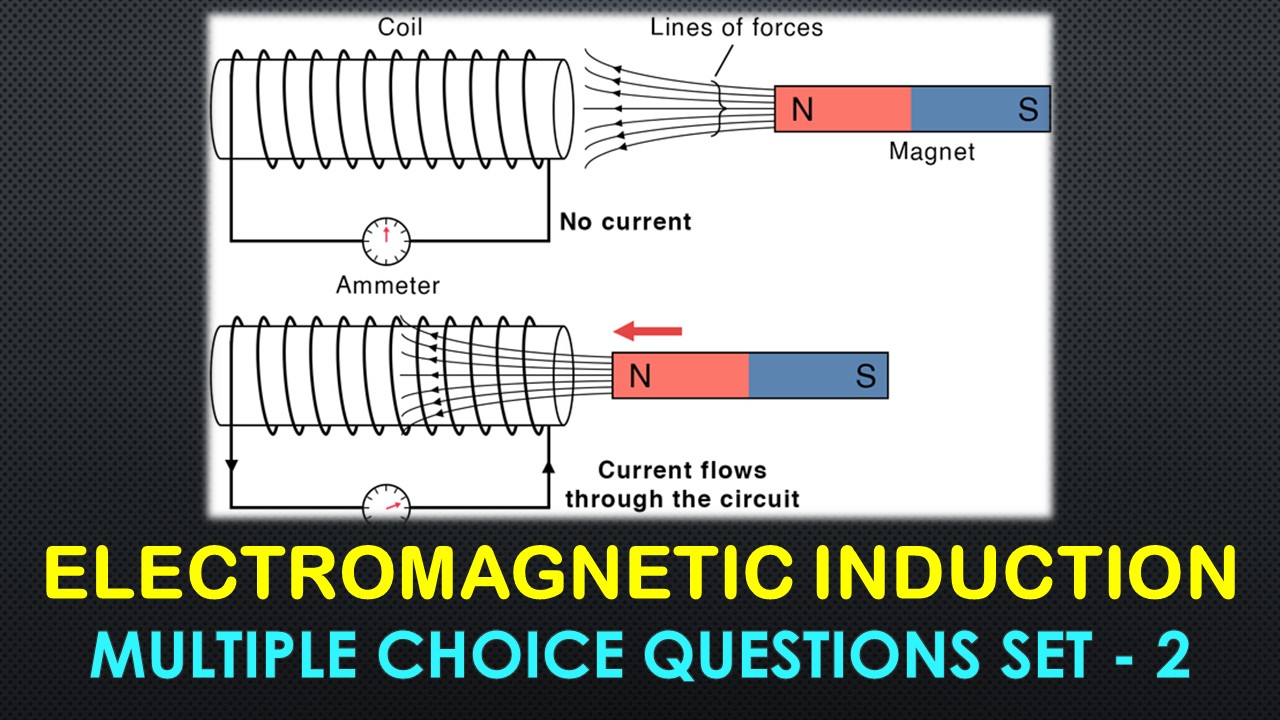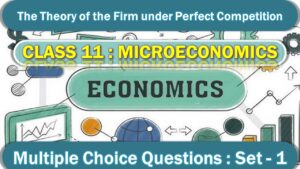CBSE Class 12 Electromagnetic Induction Multiple Choice Questions with Answers. MCQ Questions Class 12 Electromagnetic Induction with Answers Is Prepared Based on Latest Exam Pattern. Students can solve NCERT Class 12 Electromagnetic Induction MCQs with Answers to know their preparation level.
Students who are searching for NCERT MCQ Questions for Class 12 Electromagnetic Induction with Answers are compiled here to get good practice on all fundamentals. Know your preparation level on MCQ Questions for Class 12 Electromagnetic Induction with Answers. You can also verify your answers from our provided MCQ Class 12 Electromagnetic Induction with Answers. So, ace up your preparation with MCQ of Class 12 Physics Examinations.
MCQ Questions Class 12 Electromagnetic Induction with Answers - Set - 2
Question 1:
In the expression e = (dθ/dt) the -ve sign signifies:
(a) The induced emf is produced only when magnetic flux decreases
(b) The induced emf opposes the change in the magnetic flux
(c) The induced emf is opposite to the direction of the flux
(d) None of these
Correct Answer – (B)
Question 2 :
The coupling co-efficient of the perfectly coupled coils is:
(a) Zero
(b) 1
(c) slightly more than 1
(d) infinite
Correct Answer – (B)
Question 3 :
A coil having 500 square loops each of side 10 cm is placed normal to the magnetic field which increases at a rate of 1.0 Wb s-1. The induced e.m.f. is;
(a) 0.1V
(b) 5 V
(c) 0.5 V
(d) 1.0 V
Correct Answer – (B)
Question 4 :
Induced e.m.f. produced in a coil rotating in a magnetic field will be maximum when the angle between the axis of coil and direction of magnetic field is:
(a) 90°
(b) 45°
(c) 0°
(d) 180°
Correct Answer – (A)
Question 5 :
A coil of metal wire is kept stationary in a non-uniform magnetic field:
(a) An e.m.f. and current both are induced in the coil.
(b) An e.m.f. but not the current is induced iii the coil.
(c) Current but not the e.m.f is induced in the coil.
(d) Neither e.m.f. nor current is induced in the coil.
Correct Answer – (D)
MCQ Questions Class 12 Electromagnetic Induction with Answers
Question 6 :
The magnetic field is parallel to a surface, then the magnetic flux through the surface is :
(a) zero
(b) small but not zero
(c) infinite
(d) large but not infinite
Correct Answer – (A)
Question 7 :
When current I is passed through an inductor of coefficient of self-inductance L, energy stored in it is ½ Lt². This energy stored is in the form of:
(a) Voltage
(b) Current
(c) Magnetic field
(d) Electric field.
Correct Answer – (C)
Question 8 :
A copper rod moves parallel to the horizontal direction. The induced e.m.f. developed across its ends due to earth’s magnetic field will be maximum at the:
(a) poles
(b) equator
(c) latitude 30°
(d) latitude 60°.
Correct Answer – (A)
Question 9 :
Two different coils have self-inductances L1 = 8 mH, L2 = 2 mH. The current in one coil is increased at a constant rate. The current in the second coil is also increased at the same constant rate. At a certain instant of time, the power given to the two coils is the same. At that time, the current, the induced voltage and energy stored in the two coils are I1, V1, U1, and I2, V2, U2 respectively.
(a) (V2/V1) = ¼
(b) (I2 / I1) = ¼
(c) (U2/U1) = 4
(d) All of the Above
Correct Answer – (D)
Question 10 :
Which of the following is/are equal to Henry?
(a) Volt second/ampere.
(b Volt(second)²/coulomb.
(c) Joule (second)²/(coulomb)²
(d) All of these
Correct Answer – (D)
- NCERT Solutions Class 11 Chemistry Chapter 1 : Some Basic Concepts of Chemistry
- NCERT Solutions Class 11 Chemistry Chapter 2 : Structure Of The Atom
- NCERT Solutions Class 11 Chemistry Chapter 3 : Classification of Elements and Periodicity in Properties
- NCERT Solutions Class 11 Chemistry Chapter 4 : Chemical Bonding and Molecular Structure
- NCERT Solutions Class 11 Chemistry Chapter 5 : States of Matter
- NCERT Solutions Class 11 Chemistry Chapter 6 : Thermodynamics
- NCERT Solutions Class 11 Chemistry Chapter 7 : Equilibrium
- NCERT Solutions Class 11 Chemistry Chapter 8 : Redox Reactions
- NCERT Solutions Class 11 Chemistry Chapter 9 : Hydrogen
- NCERT Solutions Class 11 Chemistry Chapter 10 : The s-Block Elements
- NCERT Solutions Class 11 Chemistry Chapter 11 : The p-Block Elements
- NCERT Solutions Class 11 Chemistry Chapter 12 : Organic Chemistry: Some Basic Principles and Techniques
- NCERT Solutions Class 11 Chemistry Chapter 13 : Hydrocarbons
- NCERT Solutions Class 11 Chemistry Chapter 14 : Environmental Chemistry




